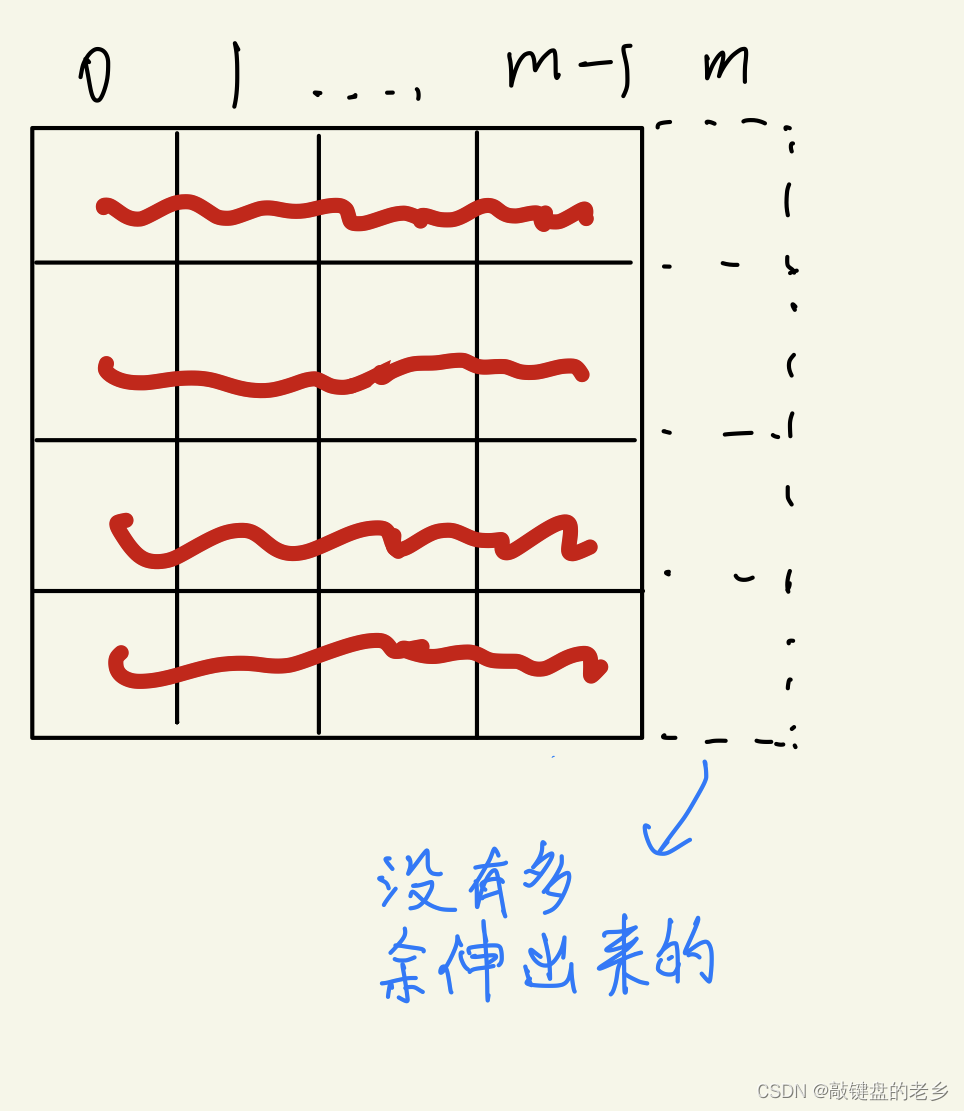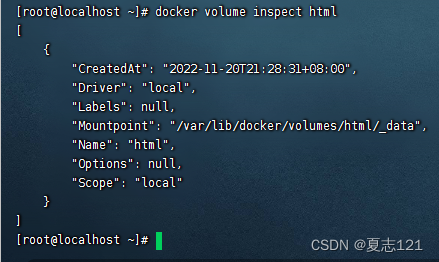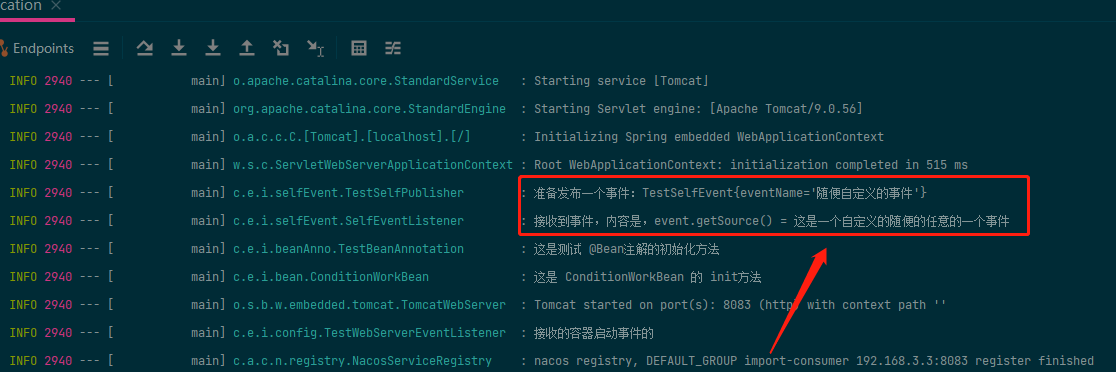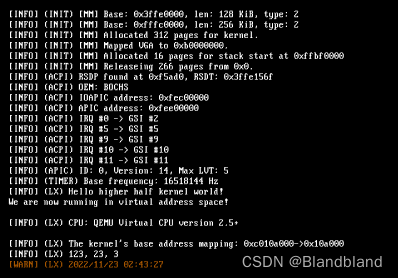第一章 内存模型和编译链接

1. 掌握进程虚拟地址空间区域划分
编程语言产生:指令+数据
exe 磁盘加载到内存,不可能直接加载到内存。
x86系统:linux系统会给当前进程分配一个 2^32 大小的空间 4G
它不存在,你却看得见,它是虚拟的。
0x00000000 ~ 0xC0000000 用户空间 user space 3G
0xC0000000 ~ 0xFFFFFFFF kernal space 内核空间 1G
0x00000000 ~ 0x08048000 不能被访问
.text段(指令); .rodata(只读数据段); .data; .bss; .heap; 加载共享库 *.dll *.so; stack;命令行参数和环境变量;ZONE_DMA/ZONE_NORMAL/ZONE_HIGHMEM。
比如 char *s = "asd"; 只能读、不能写。
//空指针
char *s = 0;
printf("%ld", strlen(s));
//段错误 (核心已转储)
int a = 12; 指令在 text 段,运行时在栈。
每一个进程的用户空间是私有的,但是内核空间是共享的。
2. 从指令的角度掌握函数调用堆栈的详细过程
ebp栈底 和 esp栈顶 这两个指针秀操作
汇编里面相对地址 往上是减法操作、往下是加法(不理解)
mov 赋值 和 ebp 有关
push 压栈 和 esp 有关
左右括号:左括号申请栈空间、右括号还原。
形参直接往esp上 push 返回答案直接用eax寄存器
<= 4 字节 eax
>4 && <= 8 eax edx
> 8 产生临时量
3. 从编译器角度理解C++代码的编译和链接原理
编译过程 + 链接过程
编译过程:
-
预编译:#开头的命令(#pragma除外 链接阶段)
-
编译:gcc g++
-
汇编:x86 AT&T(unix系统)
-
.o :二进制可重定位的目标文件
链接:编译完成的所有 .o 文件+静态库文件
- 所有.o文件段的合并。符号表合并后,进行符号解析。(符号解析:所有对符号的引用,都要找到该符号定义的地方。)
- 核心,符号的重定向。符号解析成功后给所有的符号分配虚拟地址,并将指令填上具体地址。
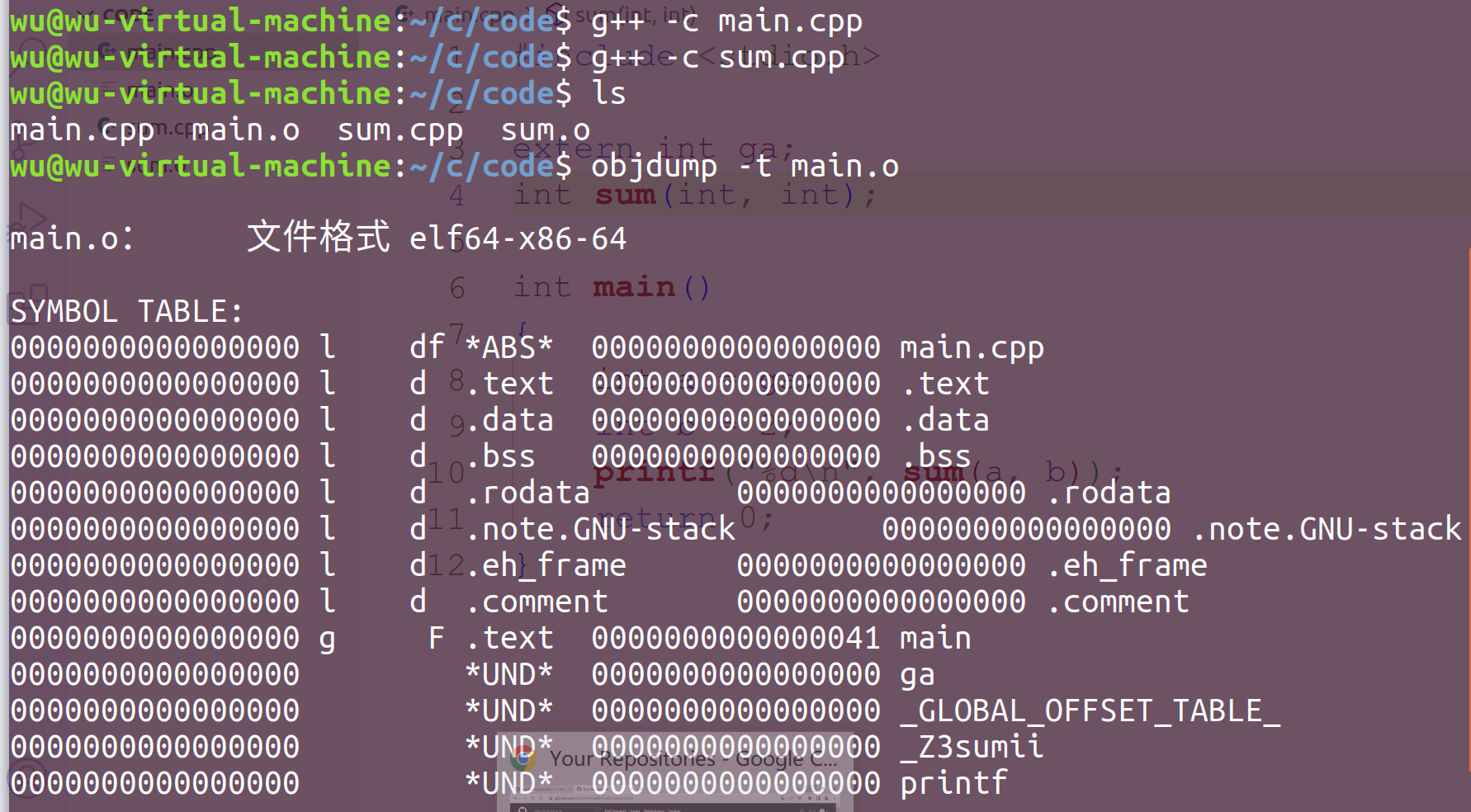
l 是 local ,g 是 全局可见
*UND* 是对符号的引用
readelf -S main.o 把段打印出来看
// 生成调试信息
g++ -c main.cpp -g
objdump -S main.o
编译过程中,符号不分配虚拟地址,会发现地址是 0,所以 .o 运行不了
.o 文件各个相同的段合并

但是直接 g++ 两个文件没有问题。应该是不详细吧。
代码段数据段被加载到内存(load告诉系统)
elf header <= 程序的入口地址
program headers <= .text .data
第二章 C++基础知识

1. 形参带默认值的参数
函数的参数从右往左压
#include <iostream>
using namespace std;
int sum (int a, int b = 20)
{
return a + b;
}
int main()
{
int a = 10;
cout << sum(a) << endl;
return 0;
}
形参默认值从右往左给
定义、声明处都可以带默认参数。默认值只能出现一次。
2. inline内联函数
在编译过程中,没有函数的调用开销了,在函数的调用点直接把函数的代码进行展开处理了。
不是所有的inline都会被编译器处理成内联函数,比如“递归”。
inline只是建议编译器把这个函数处理成内联函数。
debug版本上,inline是不起作用的;inline只有在release版本下才能出现。符号表中不生成符号了。
3. 函数重载
什么是函数重载?
一组函数,其中函数名相同,参数列表的个数或者类型不同。
-
C++支持函数重载,C不支持。
C++代码产生函数符号时,函数名+参数列表;C函数名决定。
-
函数重载需要注意什么?
-
局部优于全局,如果同名的函数在局部内声明,不会再去全局找。即重载要在同一作用域内。
-
const 或者 volatile 的时候,是怎么影响形参类型的?
const int 的类型是 int
-
-
C++和C语言代码之间如何互相调用?
C++和C的符号生成规则不同,所以无法直接调用。注意初学要用大型编译器搞,命令行让其跑起来的方式我还不会。
//C++调用C 和 C调用C++ 都是在C++里面写 extern //告诉编译器这个符号用C的规则生成 #ifdef __cplusplus extern "C" { #endif // __cplusplus int sum(int a, int b) { return a + b; } #ifdef __cplusplus } #endif // __cplusplus
#include <iostream>
#include <typeinfo>
using namespace std;
int main()
{
int a = 10;
const int b = 20;
int *c;
const int *d;
cout << typeid(a).name() << endl;
cout << typeid(b).name() << endl;
cout << typeid(c).name() << endl;
cout << typeid(d).name() << endl;
return 0;
}
/*
i
i
Pi
PKi
*/
静态时期的多态有函数重载。
4. const的用法
C里面:const可以不初始化。const 修饰的量不是常量,是常变量。不能作为左值。const int a = 10; 仅仅是语法上的不能被修改(a 这个符号不能被改变,内存可以变)
C++:const 必须初始化,初始值是立即数的叫做常量;是一个变量的可以被看成常变量。所以可以被用来定义数组的大小。
C中const就是被当作一个变量来编译生成指令的。
C++中,所有出现const变量名字的地方,都被常量的初始化替换了。
//c语言
#include <stdio.h>
int main()
{
const int a = 10;
int *p = (int *)&a;
*p = 20;
printf("%d %d %d\n", a, *p, *(&a)); //20 20 20
return 0;
}
同样一份代码,C++ 结果为 10 20 10 但是内存被改变了。
*(&a) 是被编译器优化了,直接是 a
让C++ 变为 C 的结果方式为将 const 由常量变为常变量。
#include <stdio.h>
int main()
{
int b = 10;
const int a = b;
int *p = (int *)&a;
*p = 20;
printf("%d %d %d\n", a, *p, *(&a)); //20 20 20
return 0;
}
可以理解成将所有的 a 变成了 变量 b。
5. const和一二级指针的结合应用
5.1 const 和一级指针
const 修饰的量常出现的错误:
- 常量不能再作为左值
- 不能把常量的地址泄露给一个普通的指针或者普通的引用变量
C++语言规范:const修饰的是离它最近的类型。
const int *p; //去掉int, *p被修饰为const *p不能被修改,但是p可以被修改
int const* p; //和上面的一样
#include <iostream>
using namespace std;
int main()
{
int a = 1, b = 2;
const int* p = &a;
p = &b;
cout << *p;
return 0;
}
int *const p; //被修饰的是int * const修饰的是p本身
int a = 1, b = 2;
int* const p = &a;
p = &b; //error!!!!!
但是*p没有被修饰
int a = 1, b = 2;
int* const p = &a;
*p = 3;
cout << *p; //3
const int *const p; //第一个const修饰*p 第二个const修饰p本身 严格模式
不想把常量的地址泄露给一个普通指针,用这种方法:
const int a = 10;
const int *p = &a; //*p不能被修改
const 和指针的类型转换公式:
int* <= const int* 错
const int* <= int* 对
const 如果右边没有指针 * 的话,不参与类型
#include <iostream>
#include <typeinfo>
using namespace std;
int main()
{
int a = 1;
int* const p = &a;
cout << typeid(p).name() << endl; //int *
return 0;
}
5.2 const 和二级指针
int a = 10;
int* p = &a;
const int** q = &p; //error!!!
//*q 是 const int *
//不能把常量的地址泄露给一个普通的指针 普通指针一解引用,就把常量的值改了
//可以这样
int a = 10;
const int* p = &a;
const int** q = &p;
//也可以这样
int a = 10;
int* p = &a;
const int*const* q = &p; //锁死*q
const int **q; //**q锁定
int *const* q; //*q锁定
int **const q; //q锁定
int** <= const int ** 错误
const int** <= int ** 错误
int ** <= int*const* 错误 const修饰右边的指针,相当于一级指针的 int* <= const int*
int*const* <= int ** 正确 相当于一级指针的const int* <= int*
6.左值引用和初识右值引用
有一种说法是:引用是更安全的指针。
引用和指针的区别?
-
引用必须初始化的,指针可以不初始化。反汇编:引用和指针的底层一样。
int* p = &a; 00D71FF9 lea eax,[a] 00D71FFC mov dword ptr [p],eax int& b = a; 00D71FFF lea eax,[a] 00D72002 mov dword ptr [b],eax -
引用只有一级引用,没有多级引用。指针可以有多级指针。
-
定义一个引用变量和定义一个指针变量,其汇编指令是一模一样的。都可以修改内存的值。
int array[5];
int (*p)[5] = &array;
int(&q)[5] = array;
cout << sizeof(p) << ' ' << sizeof(q); //4 20
使用引用变量时会解引用。array 和 q 是一回事儿。
左值:有内存,有名字,值可以被修改
右值:没内存(立即数,放在寄存器里面),没名字
C++11提供了右值引用。
-
int &&c = 10;指令上,可以自动产生临时量然后直接引用临时量 -
一个右值引用变量本身是一个左值。
-
右值引用不能引用左值,左值引用可以引用右值。
int&& a = 10;
a = 30;
const int &b = 20;
这两种方式的指令一样
00391FF2 mov dword ptr [ebp-18h],14h
00391FF9 lea eax,[ebp-18h]
00391FFC mov dword ptr [a],eax
7.const、指针、引用的结合使用
int *p1 = (int*)0x0018ff44;
int*&&p2 = (int *)0x0018ff44;
int *const &p3 = (int*)0x0018ff44;
&和* 右边的一个&将左边的一个 * 变为&
int a = 10;
int *p = &a;
int **q = &p; //等于 int*&q = p;
int a = 10;
int* const p = &a;
int *& q = p; //error 把常量地址泄露给普通指针 int *const& q = p;
8.new 和 delete
-
malloc 和 free,称作 C 的库函数;new 和 delete,称作运算符
-
new 不仅可以做内存开辟,还可以做内存初始化操作
-
malloc开辟内存失败,是通过返回值和nullptr作比较;new开辟内存失败,是通过抛出bad_alloc类型的异常来判断的。
try
{
int* p = new int(20);
cout << *p;
delete p;
}
catch (const bad_alloc &e)
{
}
int* q1 = new int[20](); //new int[20] 不初始化
for (int i = 0; i < 20; i++) cout << q1[i] << ' ';
delete []q1;
new有多少种?
int *p1 = new int(20);
int *p2 = new (nothrow) int; //不抛出异常版
const int *p3 = new const int(40);
//定位new 在指定的内存上new
int data = 0;
int *p4 = new (&data) int(50);
cout << data; //50
第三章 类和对象
基础部分告一段落,开始 oop 部分
1. 类和对象、this指针
类:实体的抽象类型
实体(属性、行为) -> ADT(abstract data type) (抽象数据类型)
对象 <-(实例化)类(属性:成员变量;行为:成员方法)
oop 语言的四大特征是什么?
抽象 封装/隐藏 继承 多态
#include <iostream>
using namespace std;
const int NAME_LEN = 20;
class CGoods //类名最好用C开始
{
//类的成员方法一经编译,所有的方法参数都会加一个this指针,接收该方法的对象的地址
public: //给外部提供共有的方法来访问私有的属性
void init(const char* name, double price, int amount); //商品数据初始化
void show(); //打印商品信息
//给成员变量提供一组getxxx或setxxx的方法
void setName(const char* name) { strcpy(_name, name); } //类体内实现的方法,自动处理成inline内联函数
const char* getName() { return _name; }//防止解引用修改
private: //属性一般都是私有的
//总共40个字节
char _name[NAME_LEN]; //按最长的8对齐 20 + 4
double _price; //8
int _amount; //4 + 4
};
void CGoods::init(const char* name, double price, int amount)
{
strcpy(_name, name);
_price = price;
_amount = amount;
}
void CGoods::show()
{
cout << _name << endl;
cout << _price << endl;
cout << _amount << endl;
}
int main()
{
//对象的内存大小只和成员变量有关
CGoods good;
good.init("面包", 10.5, 200);
good.setName("小面包");
good.show();
return 0;
}
2. 构造函数和构析函数
自动 init 和 release
先构造的后析构。
析构函数不带参数,所以析构函数只能有一个;构造函数可以提供多个,叫做重载。
堆上的对象要手动析构
#include <iostream>
using namespace std;
class CTest
{
public:
CTest()
{
cout << this << "构造" << endl;
}
~CTest()
{
cout << this << "析构" << endl;
}
};
int main()
{
CTest t1;
CTest* t2 = new CTest();
return 0;
}
//006FF833构造
//00A7EFA8构造
//006FF833析构
3. 对象的深拷贝和浅拷贝
有指针指向对象的外部资源时,浅拷贝的析构会出问题:先构造的指针变成了野指针。
CTest t3 = t1; 默认拷贝构造函数,浅拷贝
拷贝时扩容用 for 循环, 不用 memcpy 原因:避免指向外部的指针指向同一块
#include <iostream>
using namespace std;
class CTest
{
public:
CTest(int size)
{
this->_size = size;
_p = new int[size];
cout << this << "构造" << endl;
}
//自定义拷贝构造函数,对象的浅拷贝有问题了
CTest(const CTest& t)
{
_p = new int[t._size];
for (int i = 0; i < t._size; i++) { //扩容用for循环,不用memcpy 原因:仍然是指针
_p[i] = t._p[i];
}
cout << this << "深拷贝" << endl;
}
~CTest()
{
delete[] _p;
_p = nullptr;
cout << this << "析构" << endl;
}
private:
int _size;
int* _p;
};
int main()
{
CTest t1(10);
CTest t3 = t1;
return 0;
}
4. 代码应用实践
//string
#include <iostream>
using namespace std;
class String
{
public:
//普通构造
String(const char* str = nullptr)
{
cout << this << ' ' << "const char*构造" << endl;
if (str != nullptr)
{
m_data = new char[strlen(str) + 1];
strcpy(this->m_data, str);
}
else
{
m_data = new char[1];
*m_data = '\0'; //保证底层有内存
}
}
//拷贝构造
String(const String& other)
{
cout << this << "拷贝构造" << endl;
m_data = new char[strlen(other.m_data) + 1];
strcpy(m_data, other.m_data);
}
//构析
~String(void)
{
delete[]m_data;
m_data = nullptr;
}
//赋值函数
String& operator = (const String & other) //返回值产生临时变量,返回引用开销小
{
if (this == &other)
{
return *this; //赋完值把当前对象返回回去
}
cout << this << "赋值重载" << endl;
delete[]m_data;
m_data = new char[strlen(other.m_data) + 1];
strcpy(m_data, other.m_data);
return *this;
}
private:
//保存字符串
char* m_data;
};
int main()
{
//带const char*的构造
String str1;
String str2("hello");
String str3 = "world";
//拷贝构造
String str4 = str3;
String str5(str3);
//赋值重载
str1 = str2;
return 0;
}
//循环队列
#include <iostream>
using namespace std;
class Queue
{
public:
Queue(int size = 20)
{
_pQue = new int[size];
_front = _rear = 0;
_size = size;
}
//手写深拷贝
Queue(const Queue& src)
{
_size = src._size;
_front = src._front;
_rear = src._rear;
_pQue = new int[_size];
for (int i = _front; i != _rear; i = (i + 1) % _size)
{
_pQue[i] = src._pQue[i];
}
}
~Queue()
{
delete[]_pQue;
_pQue = nullptr;
}
void push(int val)
{
if (full())
resize();
_pQue[_rear] = val;
_rear = (_rear + 1) % _size;
}
void pop()
{
if (empty())
return;
_front = (_front + 1) % _size;
}
int front() //获取队头元素
{
return _pQue[_front];
}
bool full()
{
return (_rear + 1) % _size == _front;
}
bool empty()
{
return _front == _rear;
}
void resize()
{
int index = 0;
int* ptmp = new int[2 * _size];
for (int i = _front; i != _rear; i = (i + 1) % _size)
{
ptmp[index++] = _pQue[i];
}
delete[]_pQue;
_pQue = ptmp;
_front = 0;
_rear = index;
_size *= 2;
}
private:
int* _pQue; //申请队列的数组空间
int _front; //指示队头的位置
int _rear; //指示队尾的位置
int _size; //队列扩容的总大小
};
int main()
{
Queue queue;
for (int i = 0; i < 30; i++)
{
queue.push(rand() % 100);
}
while (!queue.empty())
{
cout << queue.front() << ' ';
queue.pop();
}
cout << endl;
Queue q2 = queue;
return 0;
}
有指针指向类外资源时深拷贝
5. 构造函数的初始化列表
成员对象
#include <iostream>
using namespace std;
class CDate
{
public:
CDate(int y, int m, int d)
{
_year = y;
_month = m;
_day = d;
}
void show()
{
printf("%d/%d/%d\n", _year, _month, _day);
}
private:
int _year;
int _month;
int _day;
};
class CGoods
{
public:
CGoods(const char* name, int price, int y, int m, int d):
_date(y, m, d)//没有默认构造函数,只能这样。写在里面要先默认。
,_price(price) //int _price = price;
{
strcpy(_name, name);
_price = price; //int _price; _price = price;
}
void show()
{
printf("%s %d\n", _name, _price);
_date.show();
}
private:
char _name[20];
int _price;
CDate _date;
};
int main()
{
CGoods good("牛奶",100,2022,11,11);
good.show();
return 0;
}
#include <iostream>
using namespace std;
class Test
{
public:
Test(int data = 10) : mb(data),ma(mb){}
void show() { cout << "ma: " << ma << " mb: " << mb << endl; }
private:
int ma; //按定义的顺序初始化
int mb;
};
int main()
{
Test t;
t.show(); //ma: -858993460(0xCCCCCCCC) mb : 10
return 0;
}
6. 类的各类成员方法以及区别
普通的成员方法 =》编译器会添加一个 this 形参变量
- 属于类的作用域
- 调用该方法时,需要依赖一个对象
- 可以任意访问对象的私有成员变量
static静态成员方法 =》 不会生成 this 形参
- 属于类的作用域
- 用类名作用域来调用方法
- 可以任意访问对象的私有对象,仅限于不依赖对象的成员(只能调用其它的static静态成员)
const常成员方法 =》 const CGoods *this
- 属于类的作用域
- 调用依赖一个对象,普通对象或者常对象都可以
- 可以任意访问对象的私有成员,但是只能读不能写
#include <iostream>
using namespace std;
class Test
{
public:
Test()
{
cnt++;
}
static int staticgetCnt() //静态成员方法,调用时不需要this指针
{
return cnt;
}
//常成员方法 只要是只读操作,一律实现为const方法
int getCnt() const
{
return cnt;
}
private:
static int cnt; //声明 不属于对象,属于类级别的
};
int Test::cnt = 0;
int main()
{
Test t1, t2;
cout << t1.getCnt() << endl;
cout << Test::staticgetCnt() << endl; //直接用类的作用域调
const Test t3; //常对象无法调用普通方法,因为传的形参无法从const转为普通
cout << t3.getCnt() << endl;
return 0;
}
7.指向类成员的指针
#include <iostream>
using namespace std;
class Test
{
public:
void func() { cout << "call Test::func" << endl; }
static void static_func() { cout << "static_func" << endl; }
int ma;
static int mb;
};
int Test::mb;
int main()
{
Test t1;
Test* t2 = new Test();
int Test::* p = &Test::ma; //类的指针
t1.*p = 20;
cout << t1.ma << endl;
t2->*p = 30;
cout << t2->*p << endl;
int* p1 = &Test::mb; //不依赖于对象
*p1 = 40;
cout << t1.mb << endl;
//指向成员方法的指针
void(Test::*pfunc)() = &Test::func;
(t1.*pfunc)(); //要依赖于对象调用
//指针指向类的static成员方法
void(*pfunc2)() = &Test::static_func;
(*pfunc2)();
delete t2;
return 0;
}
第四章 模板编程
1. 理解函数模板
模板只定义,不编译。如果将其放到另外一个文件中,如果没有对应的特例化将出错。
所以模板代码都是放在头文件中,然后在源文件中 #include 包含。
#include <iostream>
using namespace std;
template<typename T> //typename 或 class
bool compare(T a, T b) //compare是一个函数模板 是无法编译的
{
cout << "template compare" << endl;
return a > b;
}
//模板特例化(比如比较字符串大小,原方案只能比较地址大小)
template<>
bool compare<const char*>(const char* a, const char* b)
{
cout << "const char * compare" << endl;
return strcmp(a, b) > 0;
}
//非模板函数
bool compare(const char* a, const char* b)
{
cout << "非模板函数" << endl;
return true;
}
/*
在函数调用点,编译器用用户指定的类型,从原模板实例化一份函数代码出来
*/
int main()
{
cout << compare<int>(1, 2) << endl; //函数的调用点
cout << compare<double>(1.2, 1.1) << endl;
cout << compare(2, 3) << endl; //模板的实参推演
//compare(10, 10.1); //error 推导不出类型
cout << compare<int>(10, 10.1) << endl; //强制转化 或 模板函数那里两个T
cout << compare("aaa", "bbb") << endl; //优先普通函数
cout << compare<const char*>("aaa", "bbb") << endl; //强制模板函数
return 0;
}
2. 理解类模板
演示下 template 用 T 以外的其它参数
可以加默认 T 参数。 但是声明时 <> 要写
#include<iostream>
using namespace std;
template<typename T, int SIZE>
void sort(T* arr) {}
int main()
{
int arr[] = { 1,2,5,4,3 };
const int size = sizeof(arr) / sizeof(arr[0]);
sort<int, size>(arr);
return 0;
}
构造和析构函数名不用加<T>,其它出现模板的地方都要加上类型参数列表。
类模板无非就是将存数据的类型改为 T
template<typename T>
class SeqStack
{
public:
void push(const T& val);
};
template<typename T>
void SeqStack<T>::push(const T& val)
{
}
3. 实现STL向量容器vector代码
#include <iostream>
using namespace std;
/*
实现 vector 向量容器
*/
template<typename T>
class vector
{
public:
vector(int size = 10)
{
_first = new T[size];
_last = _first;
_end = _first + size;
}
~vector()
{
delete[]_first;
_first = _last = _end = nullptr;
}
vector(const vector<T>& rhs)
{
int size = rhs._end - rhs._first;
_first = new T[size];
int len = rhs._last - rhs._first;
for (int i = 0; i < len; ++i)
{
_first[i] = rhs._first[i];
}
_last = _first + len;
_end = _first + size;
}
vector<T>& operator=(const vector<T>& rhs)
{
if (this == &rhs)
return *this;
delete[]_first;
int size = rhs._end - rhs._first;
_first = new T[size];
int len = rhs._last - rhs._first;
for (int i = 0; i < len; ++i)
{
_first[i] = rhs._first[i];
}
_last = _first + len;
_end = _first + size;
return *this;
}
void push_back(const T &val)
{
if (full())
expand();
*_last++ = val;
}
void pop_back()
{
if (empty())
return;
--_last;
}
T back() const
{
return *(_last - 1); //空的情况没写
}
bool full() const { return _last == _end; }
bool empty() const { return _first == _last; }
int size() const { return _last - _first; }
private:
T* _first; //起始
T* _last; //有效元素的后继位置
T* _end; //数组空间的后继位置
void expand()
{
int size = _end - _first;
T* ptmp = new T[2 * size];
for (int i = 0; i < size; i++)
{
ptmp[i] = _first[i];
}
delete[]_first;
_first = ptmp;
_last = _first + size;
_end = _first + size * 2;
}
};
int main()
{
vector<int>vec;
for (int i = 0; i < 20; i++)
vec.push_back(rand() % 100);
while (!vec.empty())
{
cout << vec.back() << ' ';
vec.pop_back();
}
return 0;
}
4. 理解容器空间配置器allocator的重要性
上个代码存在以下问题:
构造:需要把内存开辟和对象构造分开处理
析构:析构容器有效的元素,然后释放_first指针指向的堆内存
pop_back:只需要析构对象。要把对象的析构和内存释放分开
容器的空间配置器 allocator 做四件事 =》内存开辟/内存释放 对象构造/对象析构
#include <iostream>
using namespace std;
/*
容器的空间配置器
*/
template<typename T>
class Allocator
{
public:
T* allocate(size_t size) //负责内存开辟
{
return (T*)malloc(sizeof(T) * size);
}
void deallocate(void* p) //负责内存释放
{
free(p);
}
void construct(T* p, const T& val) //负责对象构造
{
new (p) T(val); //定位new 指定内存上构造
}
void destroy(T* p) //负责对象析构
{
p->~T(); //~T()代表了T类型的析构函数
}
}
;
/*
实现 vector 向量容器
容器底层内存开辟,内存释放,对象构造和析构,都通过allocator空间配置器来实现
*/
template<typename T, typename Alloc = Allocator<T>>
class vector
{
public:
vector(int size = 10)
{
//需要把内存开辟和对象构造分开处理
//_first = new T[size];
_first = _allocator.allocate(size);
_last = _first;
_end = _first + size;
}
~vector()
{
//delete[]_first;
for (T* p = _first; p != _last; p++)
{
_allocator.destroy(p); //把_first指针指向的有效元素析构
}
_allocator.deallocate(_first); //释放堆上的内存
_first = _last = _end = nullptr;
}
vector(const vector<T>& rhs)
{
int size = rhs._end - rhs._first;
//_first = new T[size];
_first = _allocator.allocate(size);
int len = rhs._last - rhs._first;
for (int i = 0; i < len; ++i)
{
//_first[i] = rhs._first[i];
_allocator.construct(_first + 1, rhs._first[i]);
}
_last = _first + len;
_end = _first + size;
}
vector<T>& operator=(const vector<T>& rhs)
{
if (this == &rhs)
return *this;
//delete[]_first;
for (T* p = _first; p != _last; p++)
{
_allocator.destroy(p); //把_first指针指向的有效元素析构
}
_allocator.deallocate(_first);
int size = rhs._end - rhs._first;
//_first = new T[size];
_first = _allocator.allocate(size);
int len = rhs._last - rhs._first;
for (int i = 0; i < len; ++i)
{
//_first[i] = rhs._first[i];
_allocator.construct(_first + 1, rhs._first[i]);
}
_last = _first + len;
_end = _first + size;
return *this;
}
void push_back(const T &val)
{
if (full())
expand();
//*_last++ = val;
_allocator.construct(_last, val);
_last++;
}
void pop_back()
{
if (empty())
return;
//--_last;
//析构删除的元素
--_last;
_allocator.destroy(_last);
}
T back() const
{
return *(_last - 1); //空的情况没写
}
bool full() const { return _last == _end; }
bool empty() const { return _first == _last; }
int size() const { return _last - _first; }
private:
T* _first; //起始
T* _last; //有效元素的后继位置
T* _end; //数组空间的后继位置
Alloc _allocator; //定义容器的空间配置器对象
void expand()
{
int size = _end - _first;
//T* ptmp = new T[2 * size];
T* ptmp = _allocator.allocate(2 * size);
for (int i = 0; i < size; i++)
{
_allocator.construct(ptmp + i, _first[i]);
//ptmp[i] = _first[i];
}
//delete[]_first;
for (T* p = _first; p != _last; ++p)
{
_allocator.destroy(p);
}
_allocator.deallocate(_first);
_first = ptmp;
_last = _first + size;
_end = _first + size * 2;
}
};
class Test
{
public:
Test() { cout << "Test()" << endl; }
~Test() { cout << "~Test()" << endl; }
Test(const Test&) { cout << "Test(const Test&)" << endl; }
};
int main()
{
Test t1, t2, t3;
cout << "----" << endl;
vector<Test>vec;
vec.push_back(t1);
vec.push_back(t2);
vec.push_back(t3);
cout << "----" << endl;
vec.pop_back();
cout << "----" << endl;
return 0;
}
第五章 运算符重载
C++运算符重载:使对象的运算表现得和编译器内置类型一样。
1. 学习复数类CComplex
编译器做对象运算的时候,会调用对象的运算符重载函数(有限调用成员方法);如果没有成员方法,将在全局作用域找合适的运算符重载函数。
#include <iostream>
using namespace std;
class CComplex
{
public:
CComplex(int r = 0, int i = 0)
:mreal(r), mimage(i){}
//指导编译器怎么做CComplex类对象的加法操作
CComplex operator+(const CComplex& src)
{
//CComplex comp;
//comp.mreal = this->mreal + src.mreal;
//comp.mimage = this->mimage + src.mimage;
//return comp;
return CComplex(this->mreal + src.mreal,
this->mimage + src.mimage);
}
//i++
CComplex operator++(int)
{
//CComplex comp = *this;
//mreal += 1;
//mimage += 1;
//return comp;
return CComplex(mreal++, mimage++);
}
//++i
CComplex& operator++()
{
mreal += 1;
mimage += 1;
return *this;
}
void show()
{
cout << "real: " << mreal << " image: " << mimage << endl;
}
private:
int mreal;
int mimage;
friend CComplex operator+(const CComplex& lhs, const CComplex& rhs);
friend ostream& operator<<(ostream& out, const CComplex& src);
friend istream& operator>>(istream& in, CComplex& src);
};
ostream& operator<<(ostream& out, const CComplex& src)
{
out << "mreal: " << src.mreal << " mimage " << src.mimage;
return out;
}
istream& operator>>(istream& in, CComplex& src)
{
cout << "start in" << endl;
in >> src.mreal >> src.mimage;
return in;
}
CComplex operator+(const CComplex& lhs, const CComplex& rhs)
{
return CComplex(lhs.mreal + rhs.mreal, lhs.mimage + rhs.mimage);
}
int main()
{
CComplex comp1(10, 10);
CComplex comp2(20, 20);
//comp1.operator+(comp2) 加法运算符的重载函数
CComplex comp3 = comp1 + comp2;
CComplex comp4 = comp1.operator+(comp2);
comp3.show();
comp4.show();
CComplex comp5 = comp1 + 20; //20 寻找构造函数 是因为 "+" 被激活
comp5.show();
CComplex comp6 = 30 + comp1; //调不了成员方法,调全局
comp6.show();
comp5 = comp1++;
comp1.show();
comp5.show();
comp5 = ++comp1;
comp1.show();
comp5.show();
cout << comp4 << endl;
CComplex comp8;
cin >> comp8;
cout << comp8;
return 0;
}
2. 模拟实现C++的string类代码
#include <iostream>
using namespace std;
class String
{
public:
String(const char* p = nullptr)
{
if (p != nullptr)
{
_pstr = new char[strlen(p) + 1];
strcpy(_pstr, p);
}
else
{
_pstr = new char[1];
*_pstr = '\0';
}
}
~String()
{
delete[]_pstr;
_pstr = nullptr;
}
String(const String& str)
{
_pstr = new char[strlen(str._pstr) + 1];
strcpy(_pstr, str._pstr);
}
String& operator=(const String& src)
{
if (this == &src)
return *this;
delete[]_pstr;
_pstr = new char[strlen(src._pstr) + 1];
strcpy(_pstr, src._pstr);
return *this;
}
bool operator>(const String& str) const
{
return strcmp(_pstr, str._pstr) > 0;
}
bool operator<(const String& str) const
{
return strcmp(_pstr, str._pstr) < 0;
}
bool operator==(const String& str) const
{
return strcmp(_pstr, str._pstr) == 0;
}
int length()
{
return strlen(_pstr);
}
char& operator[](int index)
{
return _pstr[index];
}
const char& operator[](int index) const
{
return _pstr[index];
}
const char* c_str() const { return _pstr; }
private:
char* _pstr;
friend ostream& operator<<(ostream& out, const String& str);
friend String operator+(const String& lhs, const String& rhs);
};
String operator+(const String& lhs, const String& rhs)
{
String tmp;
tmp._pstr = new char[strlen(lhs._pstr) + strlen(rhs._pstr) + 1];
strcpy(tmp._pstr, lhs._pstr);
strcat(tmp._pstr, rhs._pstr);
return tmp;
}
ostream& operator<<(ostream& out, const String& str)
{
out << str._pstr;
return out;
}
int main()
{
String s1;
String s2 = "aa";
String s3 = s2;
String s4 = s3 + "bb";
String s5 = "cc" + s2;
cout << s4 << endl;
cout << s5 << endl;
cout << (s3 < s4) << endl;
return 0;
}
3. string字符串对象的迭代器iterator实现
#include <iostream>
using namespace std;
class String
{
public:
String(const char* p = nullptr)
{
if (p != nullptr)
{
_pstr = new char[strlen(p) + 1];
strcpy(_pstr, p);
}
else
{
_pstr = new char[1];
*_pstr = '\0';
}
}
~String()
{
delete[]_pstr;
_pstr = nullptr;
}
String(const String& str)
{
_pstr = new char[strlen(str._pstr) + 1];
strcpy(_pstr, str._pstr);
}
String& operator=(const String& src)
{
if (this == &src)
return *this;
delete[]_pstr;
_pstr = new char[strlen(src._pstr) + 1];
strcpy(_pstr, src._pstr);
return *this;
}
bool operator>(const String& str) const
{
return strcmp(_pstr, str._pstr) > 0;
}
bool operator<(const String& str) const
{
return strcmp(_pstr, str._pstr) < 0;
}
bool operator==(const String& str) const
{
return strcmp(_pstr, str._pstr) == 0;
}
int length()
{
return strlen(_pstr);
}
char& operator[](int index)
{
return _pstr[index];
}
const char& operator[](int index) const
{
return _pstr[index];
}
const char* c_str() const { return _pstr; }
//给string提供迭代器的实现
class iterator
{
public:
iterator(char*p = nullptr):_p(p){}
bool operator !=(const iterator& it)
{
return _p != it._p;
}
void operator++()
{
++_p;
}
char& operator*()
{
return *_p;
}
private:
char* _p;
};
//首元素迭代器的表示
iterator begin()
{
return iterator(_pstr);
}
iterator end()
{
return iterator(_pstr + length());
}
private:
char* _pstr;
friend ostream& operator<<(ostream& out, const String& str);
friend String operator+(const String& lhs, const String& rhs);
};
String operator+(const String& lhs, const String& rhs)
{
String tmp;
tmp._pstr = new char[strlen(lhs._pstr) + strlen(rhs._pstr) + 1];
strcpy(tmp._pstr, lhs._pstr);
strcat(tmp._pstr, rhs._pstr);
return tmp;
}
ostream& operator<<(ostream& out, const String& str)
{
out << str._pstr;
return out;
}
int main()
{
String str1 = "Hello World";
String::iterator it = str1.begin();
for (; it != str1.end(); ++it)
{
cout << *it;
}
cout << endl;
for (char ch : str1) //begin() 和 end()实现
{
cout << ch;
}
return 0;
}
4.vector容器的迭代器iterator实现
泛型算法:参数接收的都是容器的迭代器
内置类
class iterator
{
public:
iterator(T*ptr = nullptr)
:_ptr(ptr){}
bool operator !=(const iterator& it) const
{
return _ptr != it._ptr;
}
//前置++ 即++it
void operator++()
{
_ptr++;
}
T& operator*() { return *_ptr; }
const T& operator*() const { return *_ptr; }
private:
T* _ptr;
};
iterator begin()
{
return iterator(_first);
}
iterator end()
{
return iterator(_last);
}
5. 什么是容器的迭代器失效问题
迭代器在 erase 后失效;迭代器在 insert 之后失效
失效原因
- 当容器调用 erase 后,当前位置到容器末尾元素的所有的迭代器全部失效了
- 当容器调用 insert 后,当前位置到容器末尾元素的所有的迭代器全部失效了。
- 如果 insert 引起扩容,原来容器的所有的迭代器全部失效。
- 不同容器的迭代器不能进行比较运算
解决方案
对删除/插入点的迭代器进行更新操作。
//删除
auto it = a.begin();
while (it != a.end())
{
if (*it % 2 == 0)
it = a.erase(it); //更新删除位置的迭代器
else
++it;
}
//插入
auto it = a.begin();
while (it != a.end())
{
if (*it % 2 == 0)
{
it = a.insert(it, *it - 1); //要后移两个
++it;
}
++it;
}
6. 输入理解new和delete的原理
malloc 和 new 的区别?
-
malloc 按字节开辟内存;new 开辟内存时需要指定类型
所以malloc 开辟内存返回的都是 void*
-
malloc 只负责开辟空间,new 还可以进行数据的初始化
-
malloc 开辟内存失败返回 nullptr 指针,new 抛出的是 bad_alloc 类型的异常
free 和 delete 区别?
delete:调用析构函数
new 和 delete 内部用 malloc 和 free 实现。
C++为什么区分单个元素和数组的内存分配和释放呢?
对于普通的变量,没有析构,可以不按规范来
int *a = new int;
delete[]a;
自定义的类类型,有析构函数。数组时会多开4个来存个数。
当开辟数组时,会将对象的个数存下来,但是返回给用户的是开始存对象的地址(比存个数的+4)
7. new和delete重载实现的对象池应用
运算符重载:成员方法、全局方法
内存池 进程池 线程池 对象池
解决短时间内频繁调用同一区域的 malloc free
#include <iostream>
//#include <string>
using namespace std;
template<typename T>
class Queue
{
public:
Queue()
{
_front = _rear = new QueueItem();
}
~Queue()
{
QueueItem* cur = _front;
while (cur != nullptr)
{
_front = _front->_next;
delete cur;
cur = _front;
}
}
void push(const T& val)
{
QueueItem *item = new QueueItem(val);
_rear->_next = item;
_rear = item;
}
void pop()
{
if (empty())
return;
QueueItem* first = _front->_next;
_front->_next = first->_next;
if (_front->_next == nullptr)
{
_rear = _front;
}
delete first;
}
T front() const
{
return _front->_next->_data;
}
bool empty() const { return _front == _rear; }
private:
struct QueueItem //节点
{
QueueItem(T data = T()):_data(data), _next(nullptr){}
//给QueueItem提供自定义内存管理
void* operator new(size_t size)
{
if (_itemPool == nullptr) //用满了itemPool就是nullptr了
{
_itemPool = (QueueItem*)new char[POOL_ITEM_SIZE * sizeof(QueueItem)];
QueueItem* p = _itemPool;
for (; p < _itemPool + POOL_ITEM_SIZE - 1; ++p) //最后一个是nullptr
{
p->_next = p + 1;
}
p->_next = nullptr;
}
QueueItem* p = _itemPool;
_itemPool = _itemPool->_next;
return p;
}
void operator delete(void* ptr)
{
QueueItem* p = (QueueItem*)ptr;
p->_next = _itemPool;
_itemPool = p;
}
T _data;
QueueItem* _next;
static QueueItem* _itemPool;
static const int POOL_ITEM_SIZE = 1000000;
};
QueueItem* _front; //头
QueueItem* _rear; //尾
};
template<typename T>
typename Queue<T>::QueueItem *Queue<T>::QueueItem::_itemPool = nullptr;
int main()
{
Queue<int> que;
for (int i = 0; i < 10000000; ++i)
{
que.push(i);
que.pop();
}
cout << que.empty() << endl;
return 0;
}
第六章 继承与多态
1. 继承的基本意义
继承的本质:a. 代码的复用 b.
类和类之间的关系:
组合:a part of …一部分的关系
继承:a kind of …一种的关系
-
基类的成员的访问限定,在派生类里面是不可能超过继承方式的
-
protected 在派生(public、protected)类里可以被访问
-
private只有自己和友元可以访问
-
外部只能访问 public
[外链图片转存失败,源站可能有防盗链机制,建议将图片保存下来直接上传(img-FKX1ctxt-1669206382594)(C:\Users\lemer\AppData\Roaming\Typora\typora-user-images\image-20221113161322108.png)]
继承来源于自己的上一级
2. 派生类的构造过程
派生类的构造函数不能派生类自己去初始化它。
派生类从基类可以从基类继承来所有的成员(变量和方法),除构造函数和析构函数(这两个继承了也没有意义)
派生类怎么初始化从基类继承来的成员变量呢?
答:通过调用基类相应的构造函数来初始化
派生类对象构造和析构的过程是:
- 派生类调用基类的构造函数,初始化从基类继承来的成员
- 调用派生类自己的构造函数
- 调用派生类的构析
- 调用基类的构析
#include<iostream>
using namespace std;
class Base
{
public:
Base(int data)
{
y = data;
cout << "Base()" << endl;
}
~Base()
{
cout << "~Base()" << endl;
}
int y;
};
class Derive : public Base
{
public:
Derive(int data) :
Base(data), x(data)
{
cout << "Device()" << endl;
}
~Derive()
{
cout << "~Device()" << endl;
}
void show()
{
cout << "xy " << x << " " << y << endl;
}
private:
int x;
};
int main()
{
Derive x(1);
x.show();
return 0;
}
/*
Base()
Device()
xy 1 1
~Device()
~Base()
*/
3. 重载、隐藏、覆盖
子类可以调用基类的函数,但是一旦子类自定义同名函数,父类的该函数名不能被用。
1.重载关系
一组函数要重载,必须处在同一个作用域当中;并且函数名字相同,参数列表不同
2.隐藏(作用域隐藏)关系
在继承结构当中,派生类的同名成员,把基类的同名成员给隐藏调用了
3.覆盖关系
基类和派生类的方法,返回值、函数名以及参数列表都相同,而且基类的方法是虚函数,那么派生类的方法就自动处理成虚函数,它们之间成为覆盖关系。
基类对象 -> 派生类对象 N
派生类对象 -> 基类对象 Y
基类指针(引用) -> 派生类对象 N
派生类指针(引用) -> 基类对象 Y
在继承结构中进行上下的类型转换,默认只支持从下到上的转换
#include<iostream>
using namespace std;
class Base
{
public:
Base(int data = 10) : ma(data) {}
void show() { cout << "Base::show()" << endl; }
void show(int) { cout << "Base::show(int)" << endl; }
protected:
int ma;
};
class Derive : public Base
{
public:
Derive(int data = 20):Base(data), mb(data){}
void show() { cout << "Derive::show()" << endl; }
private:
int mb;
};
int main()
{
Base b;
Derive d;
//d.show();
//d.show(10); //error
//d.Base::show();
//基类 <- 派生 类型从下到上 Y
//b = d;
//派生 <- 基类 类型从上到下 N
//d = b;
//基类指针(引用) <- 派生类对象 类型从下到上 Y
Base* pb = &d; //指针的类型的基类,限制了指针访问的内容只是派生类里面基类的内容
pb->show();
//((Derive*)pb)->show(); //非常危险 涉及内存的非法访问
pb->show(10);
//派生类指针(引用)<- 基类对象 类型从上到下 N
//指针解引用后非法内存越界访问
//Derive* pd = &b; //error
return 0;
}
4. 虚函数、静态绑定和动态绑定
静态绑定
#include<iostream>
#include <typeinfo>
using namespace std;
class Base
{
public:
Base(int data = 10) : ma(data) {}
void show() { cout << "Base::show()" << endl; }
void show(int) { cout << "Base::show(int)" << endl; }
protected:
int ma;
};
class Derive : public Base
{
public:
Derive(int data = 20):Base(data), mb(data){} //给基类继承来的初始化下
void show() { cout << "Derive::show()" << endl; }
void getma() { cout << "ma " << ma << endl; }
private:
int mb;
};
int main()
{
Derive d(50);
Base* pb = &d;
pb->show(); //静态(编译时期)的绑定(函数的调用) call Base::show(010112DAh)
pb->show(10); //静态绑定 call Base::show (010112B2h)
cout << sizeof(Base) << endl << sizeof(Derive) << endl;
cout << typeid(pb).name() << endl;
cout << typeid(*pb).name() << endl;
return 0;
}
/*
Base::show()
Base::show(int)
4
8
class Base *
class Base
*/
动态绑定(虚函数)
#include<iostream>
#include <typeinfo>
using namespace std;
/*
一个类添加了虚函数,对这个类有什么影响?
总结一
一个类里面定义了虚函数,那么编译阶段,编译器给这个类类型产生
一个唯一的vftable虚函数表,虚函数表中主要存储的内容就是RTTI指针和虚函数的地址
当程序运行时,每一张虚函数表都会加载到.rodata区(只读 不能写)
总结二
一个类里面定义了虚函数,那么这个类定义的对象,其运行时,内存中开始部分,
多存储一个vfptr虚函数指针,指向相应类型的虚函数表vftable。
一个类型定义的n个对象,它们的额外vfptr指向的都是同一张虚函数表
总结三
一个类里面虚函数的个数,不影响对象内存的大小(vfptr),影响的是虚函数表的大小
*/
#if 1
class Base
{
public:
Base(int data = 10) : ma(data) {}
virtual void show() { cout << "Base::show()" << endl; }
virtual void show(int) { cout << "Base::show(int)" << endl; }
protected:
int ma;
};
class Derive : public Base
{
public:
Derive(int data = 20):Base(data), mb(data){} //给基类继承来的初始化下
/*
总结四
如果派生类中的方法,和基类继承来的某个方法,
返回值、函数名、参数列表都相同,
而且基类的方法是virtual虚函数,
那么这个派生类的这个方法,自动处理为虚函数
重写《=》覆盖
*/
void show() { cout << "Derive::show()" << endl; }
private:
int mb;
};
int main()
{
Derive d(50);
Base* pb = &d; //vfptr指针 + ma ,8个字节
/*
如果发现show()是普通函数,就静态绑定
如果发现show()是虚函数,就进行动态绑定
*/
/*
006A294F mov ecx,dword ptr [pb] vfptr
006A2952 mov eax,dword ptr [edx+4] 虚函数表
006A2955 call eax
*/
//需要在编译时确定调用哪个函数
pb->show(); //动态的绑定
pb->show(10); //动态绑定 虽然没重写
cout << sizeof(Base) << endl << sizeof(Derive) << endl;
cout << typeid(pb).name() << endl;
//Base有虚函数,*pb实现的是运行时期的类型
cout << typeid(*pb).name() << endl;
return 0;
}
#endif
5. 虚构析函数
哪些函数不能实现成虚函数?
- 构造函数不能用 virtual
- 构造函数中调用的任何函数都是静态绑定,不会发生动态绑定
- static 静态,因为static 不依赖对象
虚函数依赖:
- 虚函数能产生地址,存储在vftable当中
- 对象必须存在(vfptr -> vftable -> 虚函数地址)
虚析构函数
析构函数可以成为虚函数。因为析构函数调用时对象存在。
基类的指针指向堆上 new 出来的派生类对象时,它调用析构函数的时候必须发生动态绑定,否则会导致派生类的析构无法调用。
#include <iostream>
#include <typeinfo>
using namespace std;
class Base
{
public:
Base(int data)
{
ma = data;
cout << "Base()" << endl;
}
~Base()
{
cout << "~Base()" << endl;
}
virtual void show()
{
cout << "Base::show()" << endl;
}
private:
int ma;
};
class Derive : public Base
{
public:
Derive(int data) :
Base(data), mb(data)
{
cout << "Device()" << endl;
}
~Derive()
{
cout << "~Device()" << endl;
}
void show()
{
cout << "Derive::show()" << endl;
}
private:
int mb;
};
int main()
{
Base* pb = new Derive(10);
pb->show(); //派生类的析构函数没有被调用
delete pb;
return 0;
}
/*
Base()
Device()
Derive::show()
~Base()
*/
pb 的类型是 Base,析构函数是普通函数,静态绑定。
解决方案:将基类的析构函数变为虚函数。
virtual ~Base()
{
cout << "~Base()" << endl;
}
再跑一遍,结果为
Base()
Device()
Derive::show()
~Device()
~Base()
6. 再谈动态绑定
是不是虚函数的调用一定就是动态绑定? 不是
- 在类的构造函数中,调用虚函数,也是静态绑定(构造函数中不会发生动态)
- 如果不是通过指针或引用变量来调用虚函数,那就是静态绑定
#include <iostream>
#include <typeinfo>
using namespace std;
class Base
{
public:
Base(int data = 10)
{
ma = data;
cout << "Base()" << endl;
}
virtual ~Base()
{
cout << "~Base()" << endl;
}
virtual void show()
{
cout << "Base::show()" << endl;
}
private:
int ma;
};
class Derive : public Base
{
public:
Derive(int data = 10) :
Base(data), mb(data)
{
cout << "Device()" << endl;
}
~Derive()
{
cout << "~Device()" << endl;
}
void show()
{
cout << "Derive::show()" << endl;
}
private:
int mb;
};
int main()
{
Base b;
Derive d;
//不涉及前四个字节的指针
//静态绑定 用对象本身调用虚函数,是静态绑定
b.show(); //虚函数 call Base::show (06B1451h)
d.show(); //虚函数
//move move call 动态绑定(必须由指针调用虚函数)
Base* pb1 = &b;
pb1->show();
Base* pb2 = &d;
pb2->show();
//仍然是动态绑定
Base& rb1 = b;
rb1.show();
Base& rb2 = d;
rb2.show();
//仍然是动态绑定
Derive* pd1 = &d;
pd1->show();
Derive& rd1 = d;
rd1.show();
//流氓强转类型
Derive* pd2 = (Derive*)&b; //只能访问基类的表
pd2->show(); //b的里面只有Base的函数
return 0;
}
7. 理解多态到底是什么
静态(编译时期)的多态:函数重载、模板(函数模板和类模板)
动态(运行时期)的多态:在继承结构中,基类指针(引用)指向派生类对象,通过该指针(引用)调用同名覆盖 方法(虚函数)。基类指针指向哪个派生类对象,就会调用哪个派生类对象的同名覆盖方法,称为多态。
多态底层是通过动态绑定来实现的。pbase 访问谁的 vfptr 就继续访问谁的 vftable,当然调用的是对应的派生类对象的方法了。
软件设计“开-闭”原则:对修改关闭,对拓展开放
继承的好处
- 代码的复用
- 在基类中提供统一的虚函数接口,让派生类进行重写,然后就可以使用多态了
#include <iostream>
#include <string>
using namespace std;
class Animal
{
public:
Animal(string name):_name(name){}
virtual void bark(){}
protected:
string _name;
};
class Cat : public Animal
{
public:
Cat(string name):Animal(name){}
void bark() {
cout << "miao" << endl;
}
};
class Dog : public Animal
{
public:
Dog(string name) :Animal(name) {}
void bark() { cout << "wang" << endl; }
};
void bark(Animal* p)
{
p->bark(); //虚函数 动态绑定
}
int main()
{
Cat cat("加菲");
Dog dog("二哈");
bark(&cat);
bark(&dog);
return 0;
}
8. 理解抽象类
拥有纯虚函数的类叫做抽象类
抽象类不能再实例化对象了,但是可以定义指针和引用变量
/*
1. 让所有的动物实体类通过继承Animal直接复用该属性
2. 给所有的派生类保留统一的覆盖/重写接口
*/
class Animal
{
public:
Animal(string name):_name(name){}
virtual void bark() = 0; //纯虚函数
protected:
string _name;
};
9. 笔试实战
第一题
前四个字节是 vfptr ,指向的是当前对象的 vftable
第二题
#include<iostream>
using namespace std;
class Base
{
public:
virtual void show (int i = 10)
{
cout << "Base::show i:" << i << endl;
}
};
class Derive : public Base
{
public:
void show(int i = 20)
{
cout << "Derive::show i:" << i << endl;
}
};
int main()
{
Base* p = new Derive();
p->show();
delete p;
return 0;
}
/*
Derive::show i:10
*/
这个输出我第一次看到感到难以理解。为什么调用show()函数输出的是派生类,而输出的 i 是 10 ?
参数是编译时期压栈
008B2923 push 0Ah => 函数调用,参数压栈是在编译时期就确定好的
008B2925 mov eax,dword ptr [p]
008B2928 mov edx,dword ptr [eax]
008B292A mov ecx,dword ptr [p]
008B292D mov eax,dword ptr [edx]
008B292F call eax
派生类的构造函数的默认值没有用
第三题
派生类的构造函数为 private
#include<iostream>
using namespace std;
class Base
{
public:
virtual void show ()
{
cout << "Base::show" << endl;
}
};
class Derive : public Base
{
private:
void show()
{
cout << "Derive::show" << endl;
}
};
int main()
{
Base* p = new Derive();
p->show();
delete p;
return 0;
}
正常调用
最终能调用带Derive::show(),是在运行时期才确定的。
成员方法能不能调用,就是说方法的访问权限是不是public的,是在编译阶段就需要确定好的
如果把基类的构造函数标为private将编译出错
#include<iostream>
using namespace std;
class Base
{
private:
virtual void show ()
{
cout << "Base::show" << endl;
}
};
class Derive : public Base
{
public:
void show()
{
cout << "Derive::show" << endl;
}
};
int main()
{
Base* p = new Derive();
p->show(); //error C2248: “Base::show”: 无法访问 private 成员(在“Base”类中声明)
delete p;
return 0;
}
第四题
构造函数的左大括号写入的虚指针
#include<iostream>
using namespace std;
class Base
{
public:
Base()
{
/*
push ebp 压栈
mov ebp, esp
sub esp, 4Ch
rep stos esp <-> ebp 0xCCCCCCCC(windows vs)
vfptr <- &Base::vftable
*/
cout << "Base()" << endl;
clear();
}
//~Base()
//{
// cout << "~Base()";
//}
void clear()
{
memset(this, 0, sizeof(*this));
}
virtual void show ()
{
cout << "Base::show" << endl;
}
};
class Derive : public Base
{
public :
Derive()
{
/*
vfptr <- &Derive::vftable
*/
cout << "Derive()" << endl;
}
//~Derive()
//{
// cout << "~Derive()" << endl;
//}
void show()
{
cout << "Derive::show" << endl;
}
};
int main()
{
/*
第一种情况虚函数指针为空,动态绑定时程序崩溃
*/
//Base* pb1 = new Base(); //error
//pb1->show(); //动态绑定
//delete pb1;
/*
vfptr里面存储的是vftable的地址
vfptr <- vftable 要有这个指令写入指针
*/
Base* pb2 = new Derive();
pb2->show();
delete pb2;
return 0;
}
第七章 多重继承的那些坑
多重继承:代码的复用 一个派生类有多个基类
class C: public A, public B
{
};
1. 理解虚基类和虚继承
抽象类:有纯虚函数的类
虚基类:被虚继承的类,称作虚基类
virtual:
- 修饰成员方法是虚函数
- 可以修饰继承方式,是虚继承。被虚继承的类,称作虚基类
当一个类有虚函数,这个类生成 vfptr ,指向 vftable
vbptr 指向 vbtable,派生类虚继承而来
#include <iostream>
using namespace std;
class A
{
public:
private:
int ma;
};
class B : virtual public A
{
public:
private:
int mb;
};
class C
{
virtual void fun(){}
};
class D : virtual public C
{
};
int main()
{
A a;
B b;
C c;
D d;
cout << sizeof(a) << endl;
cout << sizeof(b) << endl; //12 有虚继承时:基类的数据要被搬到最后面
cout << sizeof(c) << endl << sizeof(d) << endl;
return 0;
}
#include <iostream>
using namespace std;
class A
{
public:
virtual void func() { cout << "A::func" << endl; }
private:
int ma;
};
class B : virtual public A
{
public:
void func() { cout << "B::func" << endl; }
private:
int mb;
};
int main()
{
//基类指针指向派生类对象时,永远指向的是派生类基类部分数据的起始地址
A* p = new B();
p->func();
delete p;
return 0;
}
运行时报错。p指向的是派生类基类部分数据的起始地址,但是应该从vbptr删除
[外链图片转存失败,源站可能有防盗链机制,建议将图片保存下来直接上传(img-9PCHXcgy-1669206382595)(https://img1.imgtp.com/2022/11/14/mf1BYDw5.png)]
解决方法:不用堆,用栈。
B b;
A* p = &b;
p->func();
2. 菱形继承的问题
很少有多重继承。
采用虚继承解决菱形继承
好处:
- 可以做更多代码的复用
- D -> B, C B *p = new D() C *p = new D() 使用起来更灵活
使 ma 在 D 里面只存在一份
#include <iostream>
using namespace std;
class A
{
public:
A(int data) :ma(data) { cout << "A()" << endl; }
~A(){ cout << "~A()"<< endl; }
protected:
int ma;
};
class B : virtual public A //virtual public
{
public:
B(int data) :A(data), mb(data) { cout << "B()" << endl; }
~B() { cout << "~B()" << endl; }
protected:
int mb;
};
class C : virtual public A //virtual public
{
public:
C(int data) :A(data), mc(data) { cout << "C()" << endl; }
~C() { cout << "~C()" << endl; }
protected:
int mc;
};
class D : public B, public C
{
public:
D(int data) :A(data), B(data), C(data), md(data) { cout << "D()" << endl; } //A(data)
~D() { cout << "~D()" << endl; }
protected:
int md;
};
int main()
{
D d(10);
return 0;
}
3. C++的四种类型转换
C++语言级别提供的四种类型转换方式
const_cast : 去掉(指针或引用)常量属性的一个类型转换
static_cast : 提供编译器认为安全的类型转换(没有任何联系的类型之间的转换就被否定了)。编译时期的类型转换
reinterpret_cast : 类似于C风格的强制类型转换,谈不上安全
dynamic_cast : 主要用在继承结构中,可以支持RTTI类型识别的上下转换。运行时期的类型转换
#include <iostream>
using namespace std;
//dynamic_cast
class Base
{
public:
virtual void func() = 0;
};
class Derive1 : public Base
{
public:
void func() { cout << "Derive1::func" << endl; }
};
class Derive2 : public Base
{
public:
void func() { cout << "Derive2::func" << endl; }
//Derive2实现新功能的API接口函数
void drive02func() { cout << "Derive2::drive02func" << endl; }
};
void showFunc(Base* p)
{
//dynamic_cast会检查p指针是否指向的是一个Derive2类型的对象
//p->vfptr->vftable RTTI信息,
//如果是,dynamic_cast转换类型成功,返回Derive2对象的地址
//否则返回nullptr
Derive2* pd2 = dynamic_cast<Derive2*>(p); //static_cast放这里不安全
if (pd2 != nullptr)
{
pd2->drive02func();
}
else
p->func(); //动态绑定
}
int main()
{
Derive1 d1;
Derive2 d2;
showFunc(&d1);
showFunc(&d2);
//const int a = 10;
//int* p2 = const_cast<int*>(&a); //去掉常量属性的一个类型转换
//*p2 = 20;
//const_cast<这里面必须是指针或引用类型 如 int* int&>
//int b = const_cast<int>a; //error
//static_cast
//int a = 97;
//char b = static_cast<char>(a);
//cout << b;
//reinterpret_cast C风格的强制转换
//int* p = nullptr;
//double* p2 = reinterpret_cast<double*>(p);
return 0;
}
第八章 STL 6大组件
1. 简介
[外链图片转存失败,源站可能有防盗链机制,建议将图片保存下来直接上传(img-i9UsmU0L-1669206382595)(https://img1.imgtp.com/2022/11/15/RxpZxgrL.png)]
[外链图片转存失败,源站可能有防盗链机制,建议将图片保存下来直接上传(img-mrv0J73c-1669206382595)(https://img1.imgtp.com/2022/11/15/Z6MyDUIZ.png)]
2. vector
扩容是两倍
迭代器失效问题要注意
vector<int>vec;
vec.reserve(20); //只给容器底层开辟指定大小的空间,并不会添加新的元素
cout << vec.size(); //0
resize()不仅给容器底层开辟指定大小的空间,还会添加新的元素
3. deque 容器和 list 容器
deque 二维,一维按二倍扩容,扩容的放在中间(oldsize / 2 的地方开始放)。第二维大小为 4096/sizeof(T)
底层数据结构:动态开辟的二维数组,一维数组从2开始,以2倍的方式进行扩容,
每次扩容后,原来第二位的数组,从oldsize/2下标开始存放
list 双向循环列表
头节点的前一个就是尾节点
4. vector、deque、list 对比
deque底层内存是否是连续的?并不是。每一个第二维是连续的,但是第二维是动态new出来的
vector 和 deque之间的区别?
- 底层数据结构
- 前中后插入删除元素的时间复杂度:deque前O(1) vector O(n)
- 对于内存的使用效率:vector 需要的内存空间必须是连续的;deque 可以分块进行数据存储。所以deque更高。
- 在中间进行insert或者erase,vector和deque它们的效率谁更好一点?vector更好挪动
vector 和 list 之间的区别?数组和链表
5. 容器适配器
- 适配器底层没有自己的数据结构,它是另外一个容器的封装,它的方法,全部由底层依赖的容器进行实现的。
- 没有实现自己的迭代器
为什么stack和queue依赖deque;priority_queue依赖vector?
- vector的初始内存使用效率太低了,没有deque好
- 对于queue来说,需要尾部插入、头部删除。
- vector需要大片的连续内存,而deque只需要分段的内存。当存储大量的数据时,显然deque对于内存的利用率更好一些
堆可以用数组实现
template<typename T, typename Container=deque<T>>
class Stack
{
public:
void push(const T& val) { con.push_back(val); }
void pop() { con.pop_back(); }
T top() const { return con.back(); }
private:
Container con;
};
6. 无序关联容器
要注意迭代器失效
unordered_set<int>s;
for (int i = 0; i < 20; i++) s.insert(rand() % 100);
auto it = s.begin();
while (it != s.end()) {
it = s.erase(it);
}
cout << s.size() << endl;
7. 有序关联容器
#include <iostream>
#include <set>
#include <map>
using namespace std;
class Student
{
public:
Student(int id, string name)
:_id(id), _name(name){}
bool operator<(const Student s) const //告诉编译器怎样排序
{
return _id < s._id;
}
private:
int _id;
string _name;
friend ostream& operator<<(ostream& out, const Student& stu);
};
ostream& operator<<(ostream& out, const Student& stu)
{
out << "id:" << stu._id << " name: " << stu._name;
return out;
}
int main()
{
set<Student>s;
s.insert({ 1000, "Bob" });
s.insert({ 2000, "Sam" });
for (const auto& stu : s)
{
cout << stu << endl;
}
return 0;
}
#include <iostream>
#include <set>
#include <map>
using namespace std;
class Student
{
public:
Student(int id = 0, string name = "")
:_id(id), _name(name){}
private:
int _id;
string _name;
friend ostream& operator<<(ostream& out, const Student& stu);
};
ostream& operator<<(ostream& out, const Student& stu)
{
out << "id:" << stu._id << " name: " << stu._name;
return out;
}
int main()
{
map<int, Student> stuMap;
stuMap.insert({ 1000, Student(1000, "张三") });
stuMap.insert({ 1200, Student(2000, "李四") });
for (auto it = stuMap.begin(); it != stuMap.end(); ++it)
{
cout << it->first << " " << it->second << endl;
}
cout << stuMap[1200] << endl;
return 0;
}
8. 迭代器 iterator
容器的嵌套类型
常量类型:const_iterator
反向迭代器:
//rbegin():返回的是最后一个元素的反向迭代器表示
//rend():返回的是首元素前驱位置的迭代其表示
vector<int>::reverse_iterator rit = a.rbegin();
for (; rit != a.rend(); ++rit)
{
cout << *rit << ' ';
}
9. 函数对象
#include <iostream>
using namespace std;
class Sum
{
public:
int operator()(int a, int b)
{
return a + b;
}
};
int main()
{
Sum sum;
/*
把有operator()小括号运算符重载函数的对象,称作函数对象或者称作仿函数
*/
int ret = sum(10, 20);
cout << ret;
}
#include <iostream>
using namespace std;
template<typename T>
bool mygreater(T a, T b)
{
return a > b;
}
template<typename T>
bool myless(T a, T b)
{
return a < b;
}
template<typename T, typename Compare>
bool compare(T a, T b, Compare comp)
{
//通过函数指针调用函数,是没有办法内联的,效率很低,因为有函数调用开销
//编译时无法知道调用哪个函数,没有办法内联
return comp(a, b);
}
int main()
{
cout << compare(10, 20, mygreater<int>) << endl; //函数指针
cout << compare(10, 20, myless<int>) << endl;
return 0;
}
解决方法:用函数对象代替函数指针。
- 通过函数对象调用operator(),可以省略函数的调用开销,比通过函数指针调用函数(不能够inline内联调用)效率高
- 对象,可以添加一些属性。
可以 ctrl 点开看定义。如以下修改成了从大到小
set<int, greater<int>>s;
10. 泛型函数和绑定器
algorithm 里面的
泛型算法 = template + 迭代器 + 函数对象
- 泛型算法的参数接收的都是迭代器
- 参数还可以接收函数对象(C函数指针)
find_if 用条件进行查询
#include<iostream>
#include<algorithm>
#include<vector>
#include <functional> //函数对象和绑定器
using namespace std;
/*
绑定器 + 二元函数对象 -》一元函数对象
bind1st:把二元函数对象的operator()的第一个新参绑定起来
bind2nd:把二元函数对象的operator()的第二个新参绑定起来
*/
int main()
{
int arr[] = { 11,22,33,44,55 };
vector<int>vec(arr, arr + sizeof(arr) / sizeof(arr[0]));
//find_if需要一元函数对象
auto it2 = find_if(vec.begin(), vec.end(),
//bind2nd(greater<int>(), 48)); //a > b 把b绑定成48
//bind1st(less<int>(), 48)); //a < b 把a绑定成48
[](int val)->bool {return val > 48; });
vec.insert(it2, 48);
for (int i : vec) cout << i << ' '; cout << endl;
for_each(vec.begin(), vec.end(),
[](int val)->void
{
if (val % 2 == 0) {
cout << val << ' ';
}
});
return 0;
}
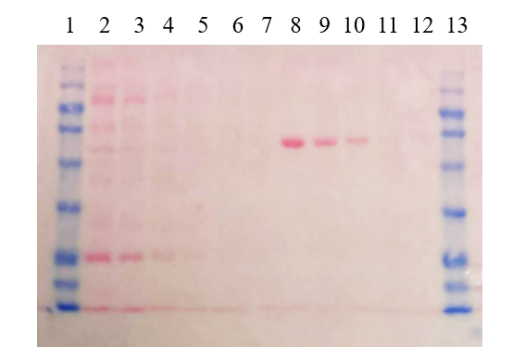
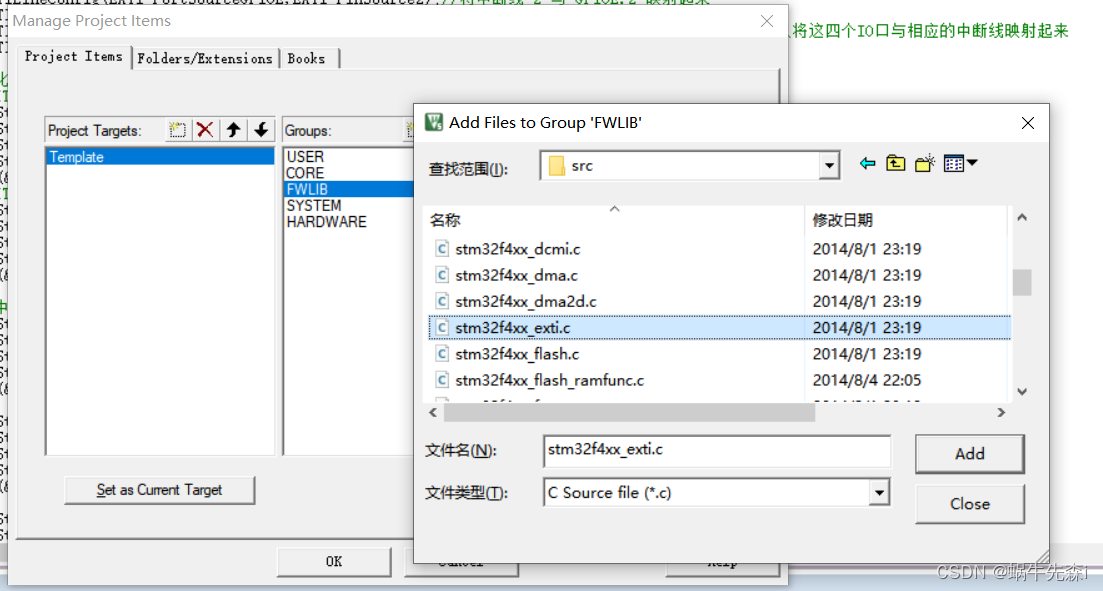
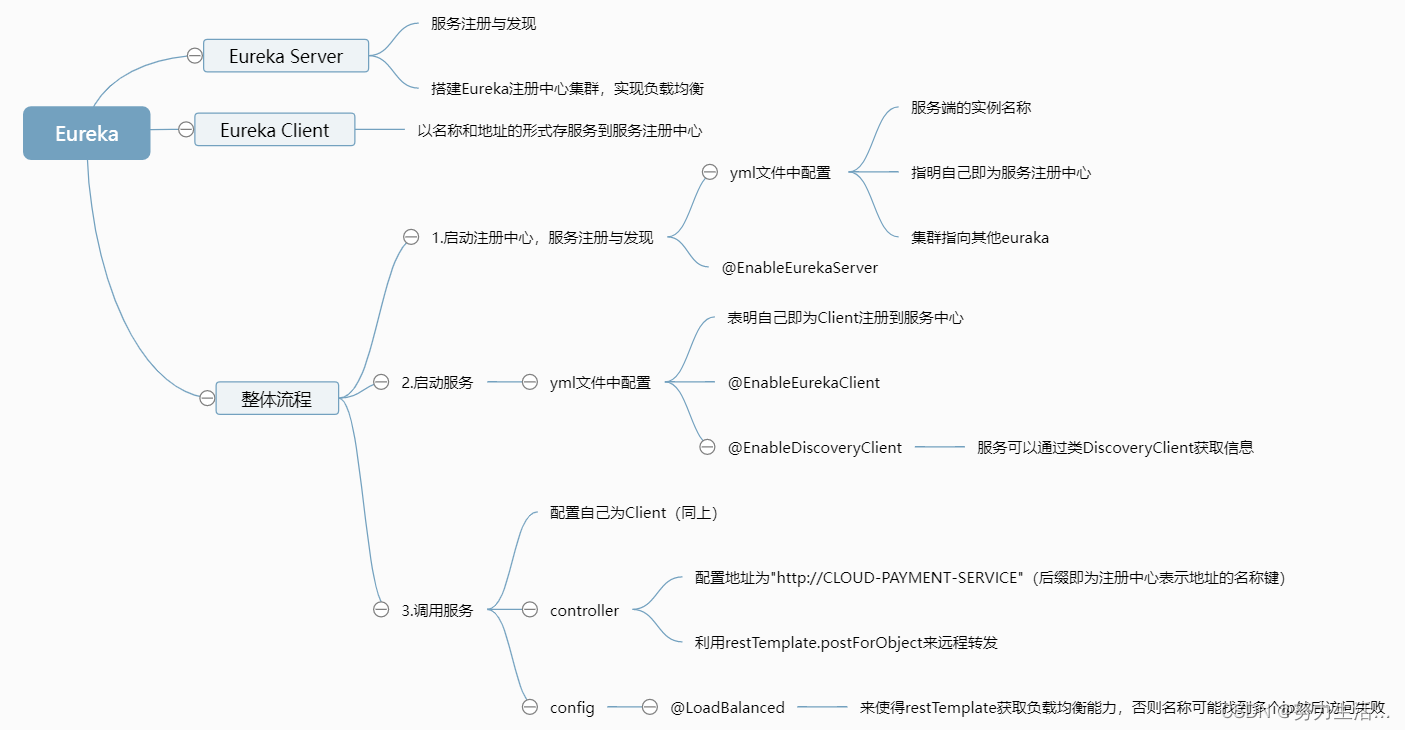


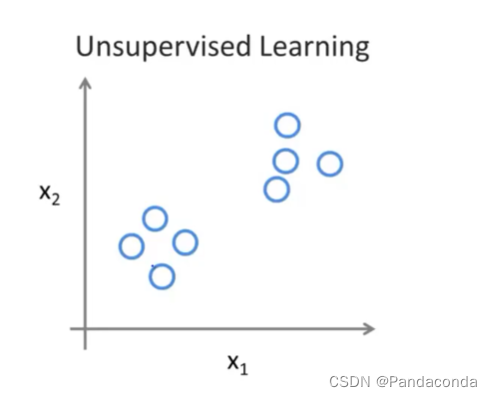


![[附源码]Python计算机毕业设计大学生社团管理系统](https://img-blog.csdnimg.cn/3d43b2a236ef4e188d4cfd96d847ca24.png)

